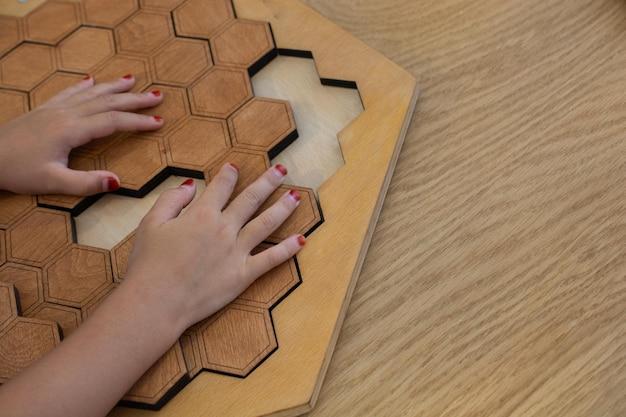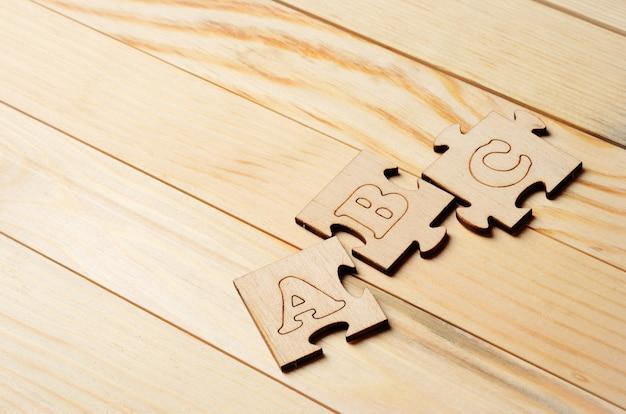Are you a puzzle enthusiast looking for a way to preserve your completed masterpiece? Laminating a puzzle is an excellent solution that not only keeps your puzzle intact but also provides a beautiful, long-lasting display. But where do you start? Can you use regular glue or rubber cement? How many coats of Mod Podge should you apply? And what’s the best method for framing without gluing? Don’t worry, we’ve got you covered!
In this blog post, we’ll explore the step-by-step process of laminating your puzzle, from choosing the right puzzle glue to framing options and preservation techniques. We’ll also address common questions like whether using Elmer’s glue is suitable and whether it’s normal for puzzles to be missing pieces. So put on your puzzle-solving hat and let’s dive into the world of puzzle preservation!
Note: This blog post was last updated in 2023 to provide you with the most up-to-date information and techniques for laminating and preserving your puzzles.
How to Laminate a Puzzle
So, you’ve finally conquered that 1000-piece puzzle after spending countless hours maneuvering those elusive little pieces into their rightful places. But now what? You don’t want all your hard work to be for naught, especially if you plan on showcasing your masterpiece for all to see. That’s where laminating comes in! In this guide, we’ll walk you through the steps of how to laminate a puzzle, so you can preserve your triumph for years to come. Let’s dive in!
Gather Your Materials
Before you embark on this puzzle-preservation journey, it’s essential to gather all the necessary materials. Remember, preparation is key! Here’s what you’ll need:
1. Puzzle Glue
Not just any glue will do the trick here. You need specialized puzzle glue that will hold your puzzle together without leaving any sticky residue. Make sure to choose a high-quality puzzle glue to ensure the longevity of your masterpiece.
2. Foam Brush
A foam brush is a handy tool for applying the puzzle glue evenly. Its soft bristles won’t damage your puzzle’s delicate surface, allowing for seamless application.
3. Wax Paper or Parchment Paper
To protect your work surface from any potential messes, lay down some wax paper or parchment paper. This will help prevent the puzzle from sticking to your table and ensure an easy cleanup.
Gluing the Puzzle
Now that you have everything you need, it’s time to get down to business and start gluing that puzzle together. Follow these steps:
Step 1: Prep Your Puzzle
Carefully slide a piece of wax paper or parchment paper underneath your completed puzzle. This will create a protective barrier between the puzzle and your work surface.
Step 2: Apply the Glue
Using your foam brush, apply a thin and even layer of puzzle glue over the entire surface of the puzzle. Make sure to cover every crevice and edge to ensure the puzzle holds together securely.
Step 3: Let It Dry
Once you’ve covered the puzzle with glue, let it dry completely. This usually takes a couple of hours, but it’s best to leave it overnight to ensure it’s fully set.
Laminating the Puzzle
Now that your puzzle is glued together and dry, it’s time to take things to the next level and laminate it. Follow these steps:
Step 1: Measure and Cut the Laminate Film
Measure the dimensions of your puzzle and cut a piece of laminate film slightly larger than those measurements. This extra allowance will ensure complete coverage.
Step 2: Peel and Stick
Carefully peel the backing from the laminate film and align it with one edge of your puzzle. Slowly press the film onto the puzzle, smoothing it down as you go to prevent any air bubbles from forming.
Step 3: Trim the Excess Film
Once the laminate film is securely applied, use a sharp pair of scissors or a precision knife to trim off the excess film around the edges of your puzzle. Take your time with this step to achieve clean, professional-looking results.
Show Off Your Laminated Puzzle!
Congratulations! You’ve successfully laminated your puzzle, ensuring its preservation for years to come. Now you can proudly display your masterpiece without worrying about pieces coming loose or the image fading over time. Your dedication and hard work deserve to be showcased, so go ahead and find the perfect spot to exhibit your laminated puzzle. Who knows, your friends might even mistake your living room for an art gallery!
So, the next time you find yourself faced with a completed puzzle, don’t hesitate to give it the laminating treatment. With a bit of patience and the right materials, you’ll turn your puzzle into a durable work of art that will withstand the test of time. Get ready to marvel at your handiwork and share your puzzling prowess with the world!
FAQ: How To Laminate A Puzzle
Can I Use Elmer’s Glue to Laminate a Puzzle
Yes, you can definitely use Elmer’s glue to laminate your puzzle. Elmer’s glue is not only a versatile adhesive but also a pocket-friendly option for puzzle enthusiasts on a budget. Just make sure to apply it evenly on the front of your puzzle before letting it dry completely.
Are Jigsaw Puzzles Beneficial for Your Brain
Absolutely! Engaging in jigsaw puzzles is like hitting the mental gym for your brain. Not only does it improve your ability to concentrate and enhance your memory, but it also boosts your problem-solving skills. So, puzzle away and keep your brain sharp as a tack!
Can I Use Rubber Cement to Laminate a Puzzle
While rubber cement may seem like an alternative adhesive, it’s not the best option for laminating puzzles. Rubber cement tends to wrinkle and may not provide a smooth finish. It’s better to opt for puzzle-specific glues or glues designed for laminating purposes for a flawless result.
How Can I Make a Puzzle Permanent
To make your puzzle permanent, you can use puzzle glue or a laminating film. Both options will ensure that every piece stays in place and your masterpiece remains intact for years to come.
How Do I Display a Puzzle Without a Frame
If you don’t have a frame, fear not! There are alternative ways to display your completed puzzle. You can use puzzle preserving sheets that stick to the front and back of your puzzle, ensuring it stays together while allowing you to hang it on a wall or prop it on a shelf.
How Many Coats of Mod Podge Do I Need for a Puzzle
For a puzzle that’s truly preserved, it’s recommended to apply at least two coats of Mod Podge on the front of the puzzle. Give it sufficient drying time between coats to ensure a sturdy and long-lasting finish.
Which Mod Podge Is Best for Preserving Puzzles
When it comes to preserving puzzles, Mod Podge Puzzle Saver is your superhero! This specially formulated variation of Mod Podge provides a strong bond, preventing any puzzle pieces from losing their place. It’s the perfect sidekick for your puzzle preservation mission.
Should I Frame My Puzzle
Framing your completed puzzle allows you to proudly showcase your accomplishment on a wall. It not only adds a touch of elegance but also ensures that your puzzle remains protected against accidental damage or scattering of the pieces. Plus, it’s a surefire way to impress your guests!
Is It Common for Puzzles to Be Missing Pieces
While it’s frustrating, missing puzzle pieces are unfortunately not uncommon. During the manufacturing process or the wear and tear of handling, a piece or two may sometimes go astray. If that happens, take a deep breath, embrace the imperfect and enjoy the challenge!
Does Mod Podge Work Well on Puzzles
Absolutely! Mod Podge works like magic when it comes to preserving puzzles. It not only seals the pieces together but also adds a protective layer, ensuring your hard work lasts for years. So, grab your Mod Podge and let the preservation magic begin!
Can I Frame a Puzzle Without Gluing It
Yes, indeed! If you prefer to keep your puzzle intact and not glue it, you can still frame it without any worries. Simply use puzzle preservation sheets or adhesive strips to secure the back of the puzzle and then frame it like any other artwork for a clean and professional look.
What Is the Best Puzzle Glue Option
When it comes to choosing the best puzzle glue, it ultimately depends on personal preference. However, leading brands like Mod Podge, Ravensburger, and Jigsaw Puzzle Glue offer excellent options that are specifically designed for puzzles and provide a strong and durable bond.
How Can I Preserve a Puzzle Without Using Glue
If you’d rather not use glue to preserve your puzzle, there are other methods available. You can use puzzle conserver sheets or adhesive film to seal the puzzle and keep all the pieces together. This way, you can display and protect your puzzle without any adhesive mess.
How Can I Preserve a Puzzle to Frame It
To preserve your puzzle for framing, you can use puzzle preservation sheets or adhesive film on both sides of the puzzle. This method securely holds the pieces in place and ensures a smooth finish, making it ready to be framed and showcased proudly on your wall.
What Should I Do with a Completed Puzzle
Once you’ve completed your puzzle, the possibilities are endless! You can frame it as a memorable keepsake, offer it as a thoughtful gift, disassemble it and start a new one, or even donate it to a local charity or puzzle enthusiast. Let your creativity guide you to the next puzzle adventure!
Do I Glue the Front or Back of the Puzzle
When preserving a puzzle, it’s crucial to apply the adhesive to the front of the puzzle. The adhesive secures the front layer, preventing any pieces from loosening or detaching. Remember, the goal is to preserve your hard work and ensure every piece remains in place.
Can a Poster Frame Hold a Puzzle
Absolutely! A poster frame can work wonders for displaying your completed puzzle. Just make sure that the frame is slightly larger than your puzzle to accommodate the depth of the pieces. Once securely framed, your puzzle will look like a stunning work of art hanging on your wall.

